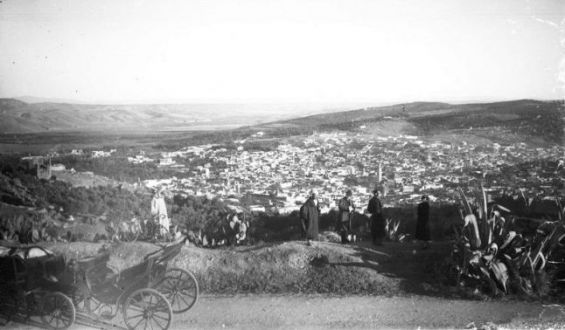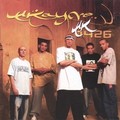After the death of the Saadi’s most famous sultan, Ahmed al-Mansur, Morocco was in turmoil. A civil war erupted in the country, marking the start of the Saadi dynasty’s end. In the middle of this chaos, a powerful earthquake hit the city of Fez, resulting in thousands of deaths and significant damage.
On the night of May 11, 1624, the city in northeastern Morocco, was wrecked to the ground. Several records referred to the earthquake as a «catastrophe» that «destroyed almost completely» Fez. The powerful earthquake was felt in other localities, including Meknes, Baddis, Sefrou, Taza, Salé and even Safi.
In a scientific article entitled «Re-examination of the historical 11 May, 1624 Fez earthquake parameters», Taj-Eddine Cherkaoui, Fida Medina and Abdelaziz Mridekh report that the May 1624 Fez earthquake is «one of the worst natural disasters in the history of Morocco».
The earthquake «caused serious damage in the city of Fez and its surroundings» and «occurred in one of the most active seismic zones in the country», they added. The natural disaster also occurred at «a crucial time in history of Morocco», the researchers added, referring to the decline of the Saadi dynasty and the outbreak of internal wars.
Fez' old districts collapse
Nevertheless, the deadly earthquake was recorded through several testimonies and journals from that period. In a letter sent to members of his family, an eyewitness named Abdelkader Al Fassi described the damage the earthquake had caused.
«The walls of houses were cracked in Fez, making buildings collapse and burying an incalculable number of victims under rubble», wrote Al Fassi to Al-Qadiri, as described in the same article. «Few houses have escaped from the disaster […] the disaster cost the life of entire families […] such a disaster has never been seen before», the eyewitness added.
Another testimony was more detailed about the casualties that the earthquake left. Texts written in Hebrew by Moroccan Jews Saül Serero and Maymun b. Sa’dyna Ibn Danan revealed that the death toll in Fez was heavy.
«Such large earthquake, that we and our fathers have never known before […] Many houses collapsed in the mellah, by the grace of God, there were no casualties. At Fez el Jedid, eleven Muslims died, at Fez el Bali, there were more than fifteen hundred dead […]», the historical account revealed.
In another journal published by the same researchers, it was indicated that «more than two thousand five hundred people perished in Fez el Bali, In addition to countless children, and their houses had become their graves, while the Israelites had no loss to be regretted».
An intense earthquake felt outside Fez
Records acquired by the researchers show that old buildings that had been built in the city between 789 and 808 suffered the most from the earthquake. Meanwhile, «districts located in the southwest (Fez el-Jedid), built in 1276, and the mellah, which was built in 1438» did not suffer the same fate.
The damage was also done in the localities surrounding Fez. According to the same paper, two people were killed in Meknes and two towers fell to the ground. In Sefrou, «four houses collapsed, but there was no victims» and in Salé «two towers had collapsed during the earthquake».
As strong and violent as it was, the May 1624 earthquake marked a new beginning for the city of Fez as it started to get densely populated. During the Saady dynasty, Fez was home to new districts and accounted for 84,000 houses and 700 mosques.
According to «Evolution of Sanitation and Wastewater Technologies through the Centuries» (IWA Publishing, 2014) by Andreas N. Angelakis and Joan B. Rose, the 1624 earthquake damaged homes and their supply network.
«These are probably the reasons of developments of the Al-Fachtali model to address the issue of determining quotas maintenance of Fez hydraulic system which is the greatest innovation hydraulics in the seventeenth century», the same book recalled.
More than a century later, Fez was hit by a second earthquake, which ravaged its sister city Meknes in November 1755. In 1773, a third earthquake was felt in both Tangier and Fez, and several houses were destroyed by the disastrous event.





 chargement...
chargement...













